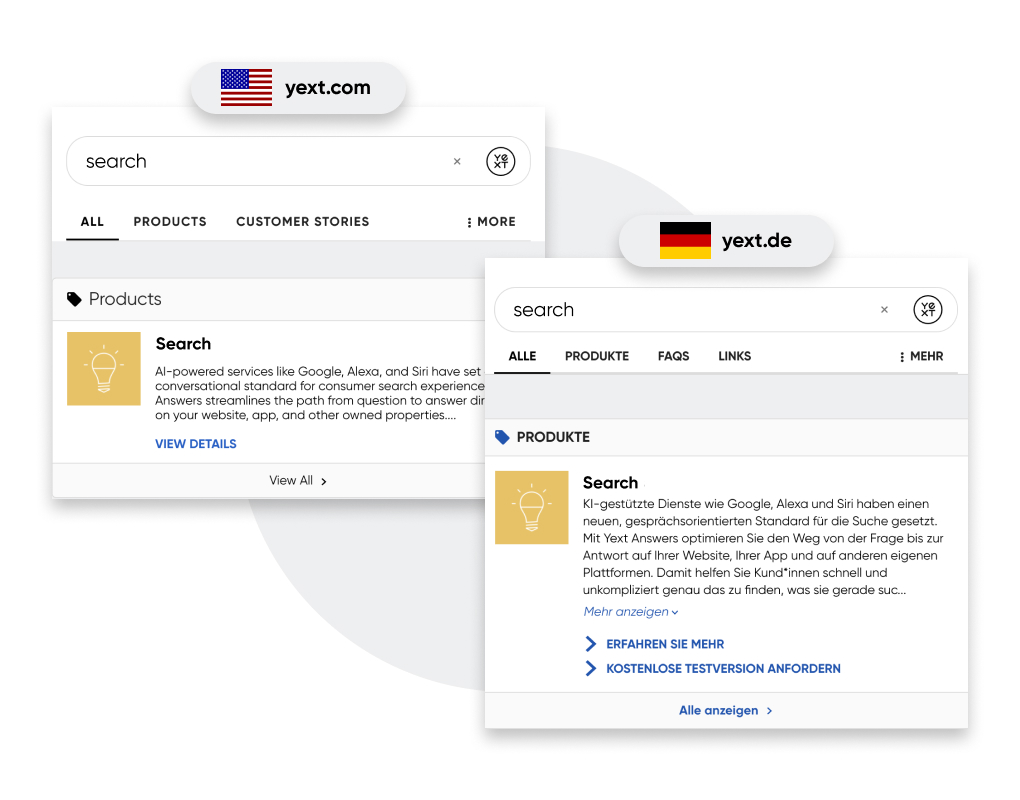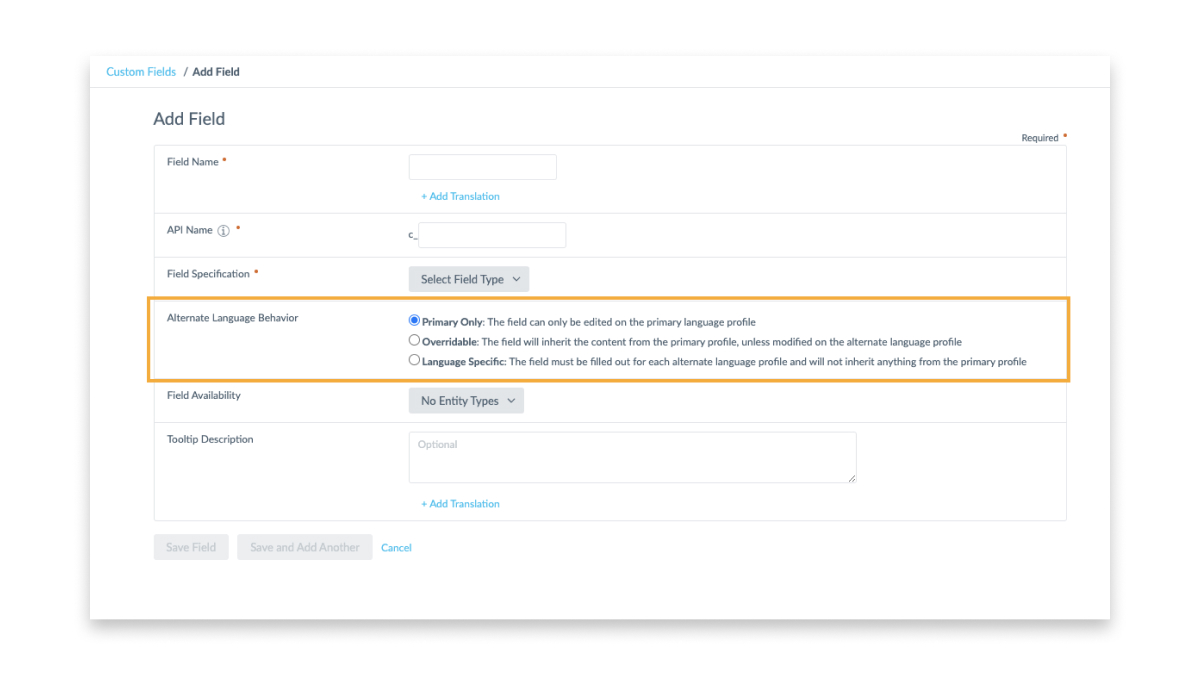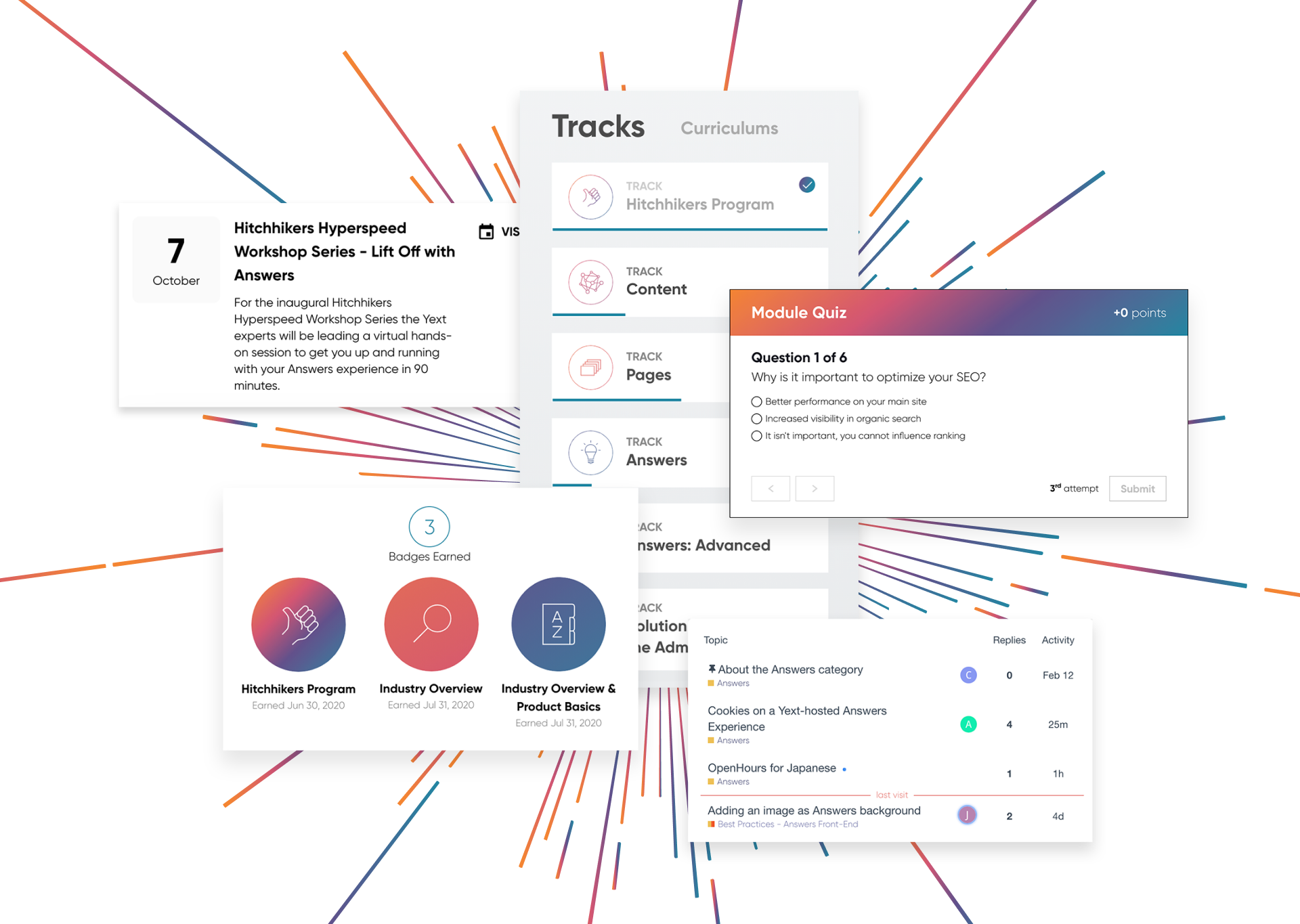Multi-Language
Multi-Language
Many brands, even those that operate within a single country, must store their data in a way that serves more than a single language. It's important to be able to reach your customers using their own language through sharp web pages, responding to reviews, and enabling search experiences, all of which sit on top of a multi-language CMS.

Language Behavior for Fields
An entity is made up of a collection of language profiles, and each language profile contains a set of fields with varying types of content. For built-in fields, Yext determines the language behavior, and for custom fields, you can set the language behavior for each field. For example, some content is completely independent of language, like hours or a map marker, while other content that is wholly dependent on language, like a description or all other pure string fields.

Uploading Specific Languages
Administrators can take advantage of all Yext's flexible methods to add information to Content. Easily add data to language profiles by updating data manually, via template, by Entity Upload, via API, by App Directory, or by using Assets. For example, users can upload their menus for their restaurant in various languages to make sure customers are getting the correct information all around the world.

